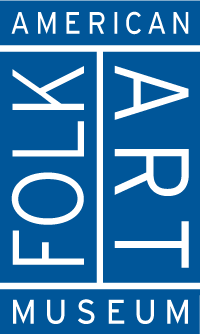Record Details
Fancy-Weave Doublecloth Coverlet: Snowflake Medallion with Hemfield Railroad Border
American coverlet weaving enjoyed its heyday during the late eighteenth century and the first half of the nineteenth. Prior to about 1810, most clothing textiles were produced domestically by women for their rural families. Professional weavers, however, created all but plain-weave blankets and some overshot coverlets. This professionally woven fancy-weave coverlet was made to commemorate the Hemfield Railroad, which was incorporated in 1850. The seventy-six mile line, intended to provide an eastern outlet to western roads, was to operate in Pennsylvania between Greensburg and West Newton, Westmoreland County, and branch to Donegal Township, Washington County, and then to Wheeling, Virginia (now West Virginia). Sixteen miles of track, laid from the Virginia state line to Washington, Pennsylvania, opened in 1857. This was the only charter conceded by the state of Virginia for any railroad passing through from Pennsylvania to Ohio, and its projected use was for trade on the Ohio River.
Eight portrait medallions, two at each corner, surrounded by the words "Hemfield Railroad" may depict the first president under the charter, William M'Kennan. With only the original sixteen miles of track completed, the project was abandoned and the Hemfield Railroad was sold in 1871 to the Baltimore and Ohio Railroad. It is not known who wove the small group of extant Hemfield Railroad coverlets, though they traditionally have been attributed to five Virginia/West Virginia weavers: Martin Burns, Daniel Campbell, Harvey Cook, George Coulter, and William Harper.
Stacy C. Hollander, "Fancy-Weave Doublecloth Coverlet: Snowflake Medallion with Hemfield Railroad Border," in American Anthem: Masterworks from the American Folk Art Museum (New York: Harry N. Abrams in association with American Folk Art Museum, 2001), 340.
Object information is a work in progress and may be updated with new research. Records are reviewed and revised, and the American Folk Art Museum welcomes additional information.
To help improve this record, please email photoservices@folkartmuseum.org














